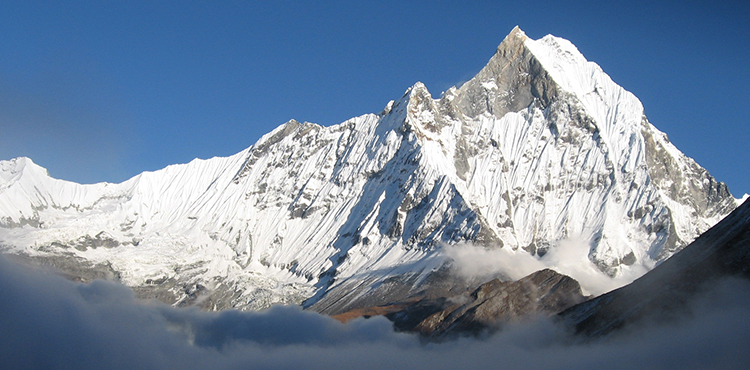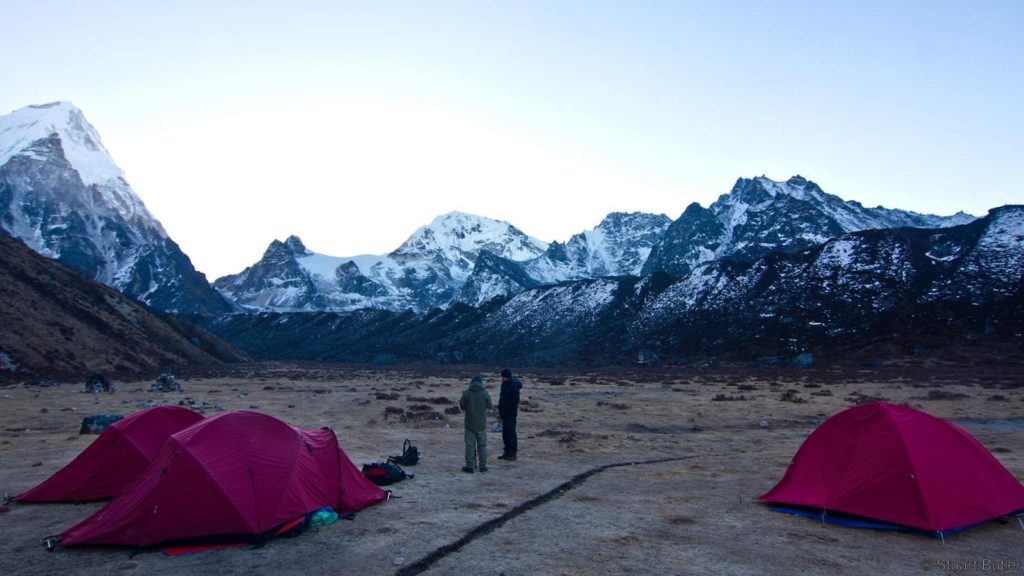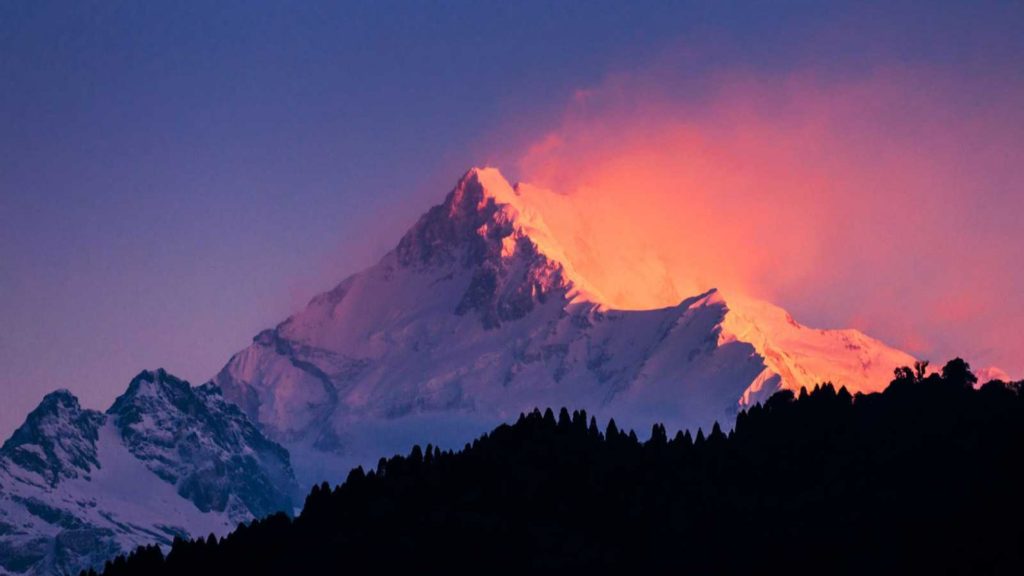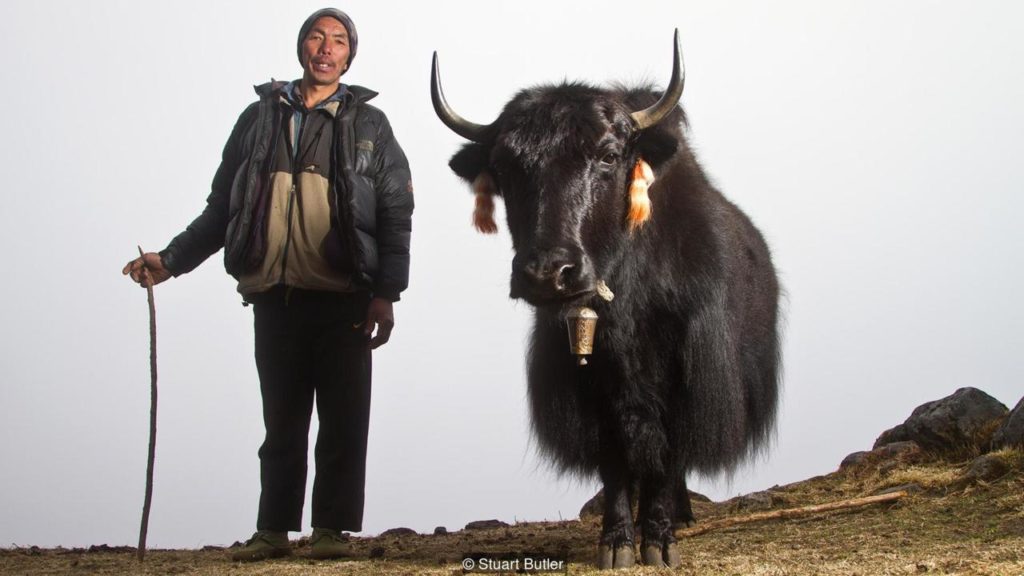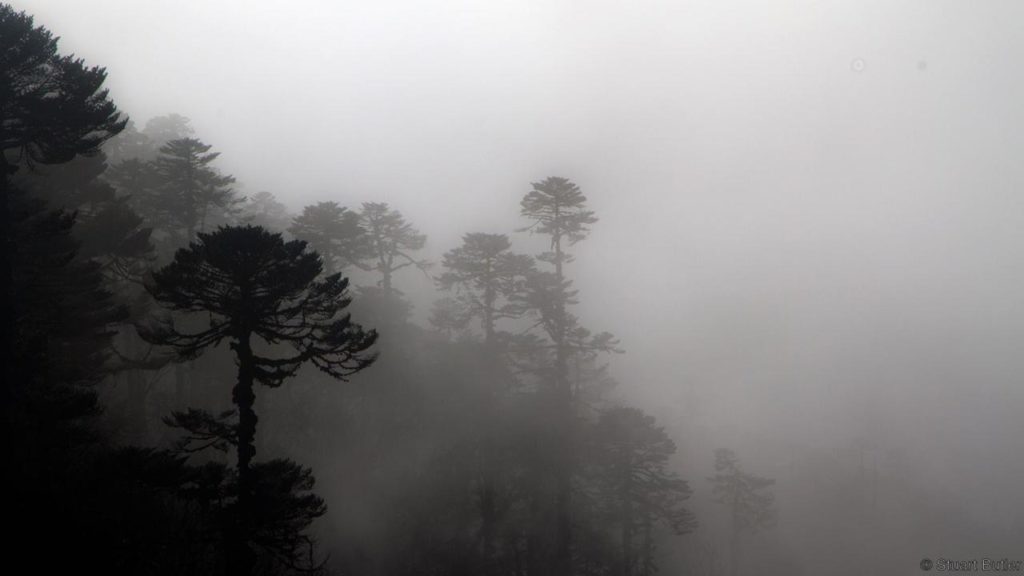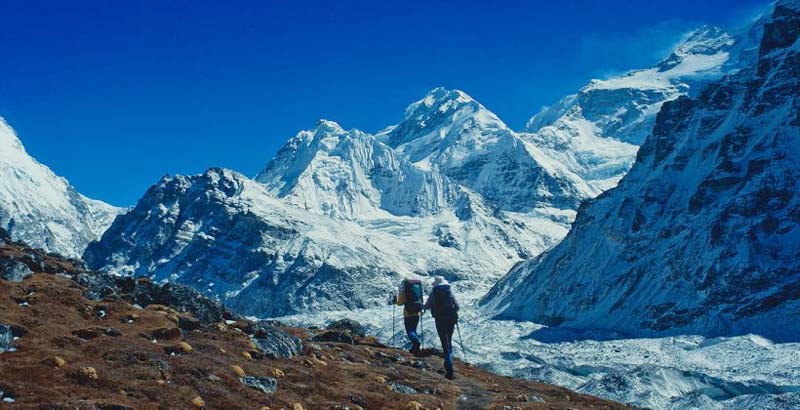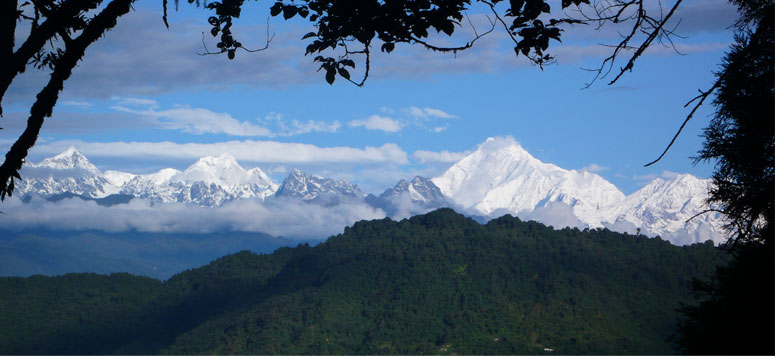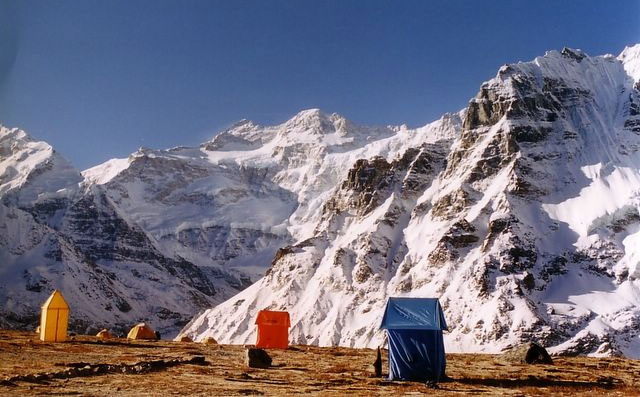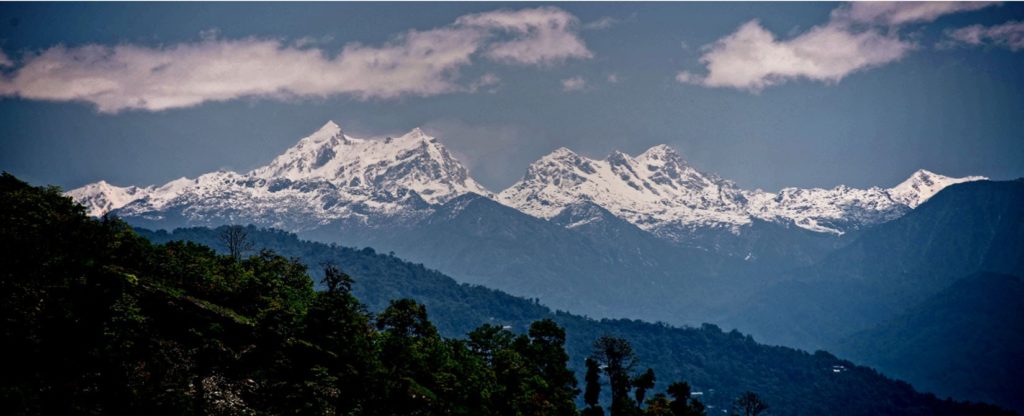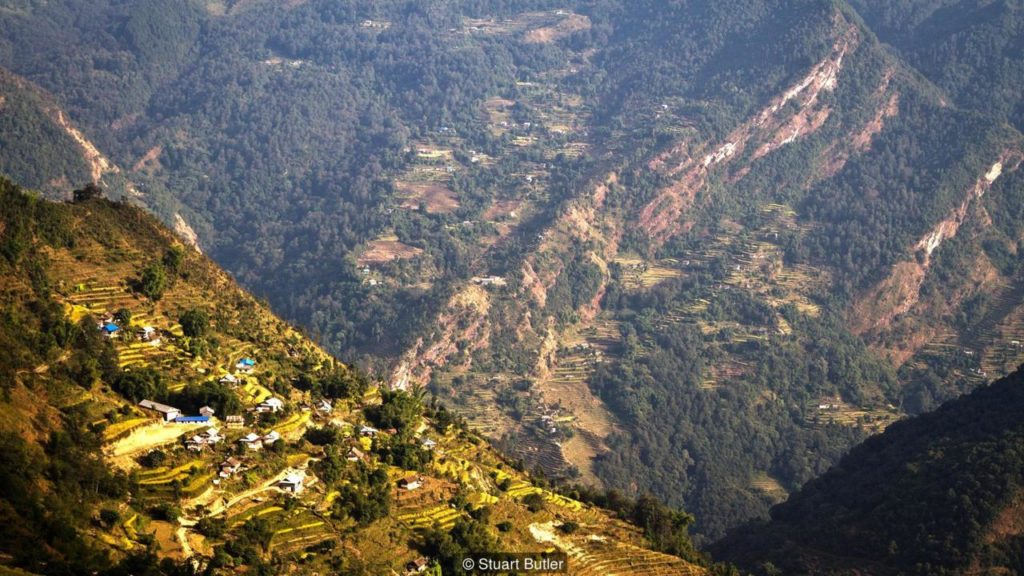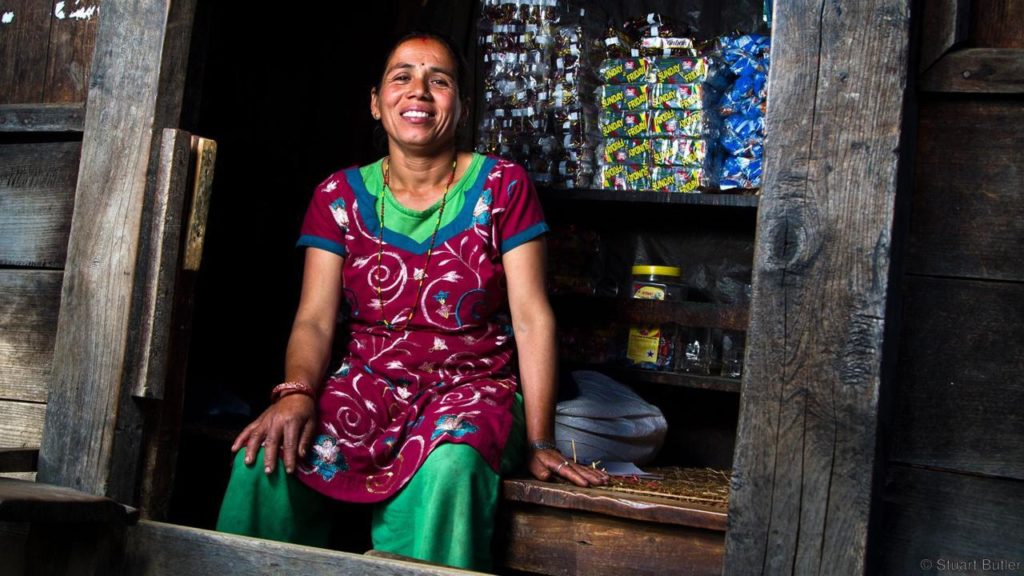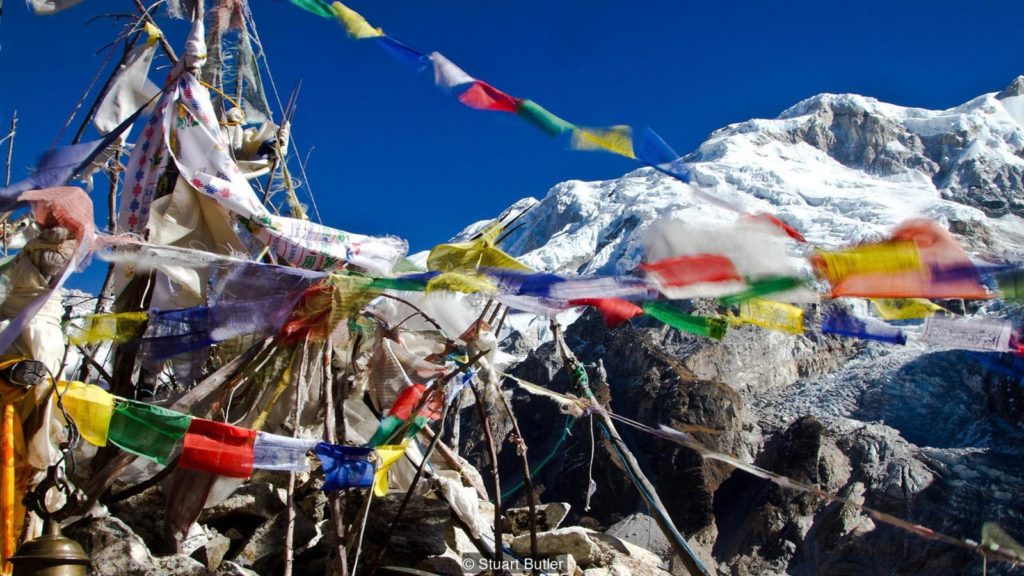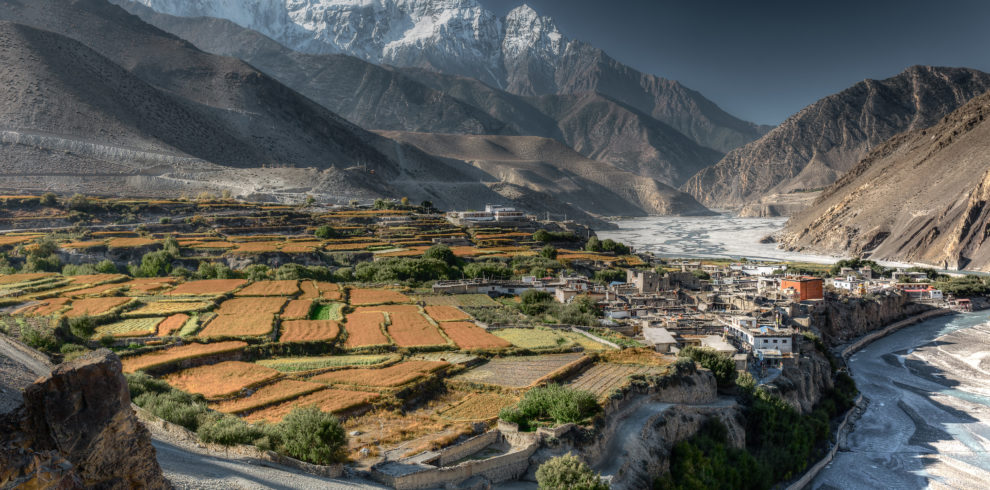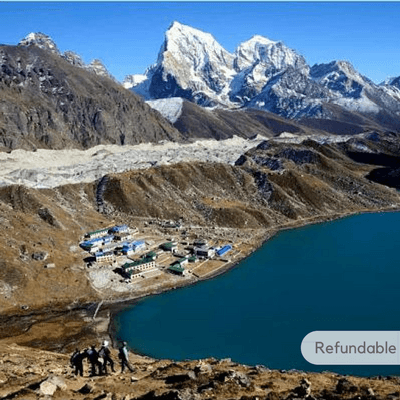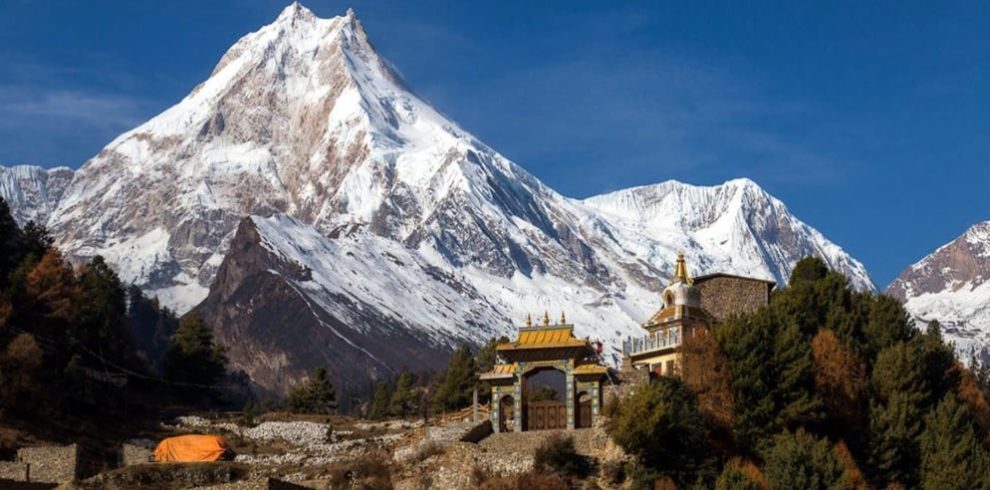
Kanchenjunga, a name that originates from Tibetan, means the “five treasures of snow” and corresponds to the massif’s five distinct peaks.
Like many mountains in Nepal, Kanchenjunga offers world-class trekking. But unlike some of the country’s more popular routes, which can become overrun in the prime autumn and spring hiking seasons, the trails to and around Kanchenjunga’s two base camps remain delightfully free of foreign visitors – likely due to the difficulty and expense of reaching the area. Kanchenjunga is well off the established tourist trail and reaching a trailhead requires several days of road travel or a costly flight. In addition, trekkers must have proper permits and be accompanied by a recognized guide company, generally arranged in Kathmandu.
Trekkers can choose one of two routes: to the south or north base camp. The trek to the 5,140m-high north base camp is longer, but offers more time in the high mountains. It’s also possible, over the course of roughly 25 days, to link the two routes via a couple of high passes. I trekked to the 4,730m-high south base camp, starting in the small market town of Taplejung, which is located a two-day drive from Kathmandu. It took me nine days to reach base camp, and another five for the hike back.
For the first four days, the trail coursed through small villages, patches of tropical forest and terraced fields like the one pictured here. Crops vary depending on the altitude, with rice grown at lower levels and barley higher up. The big cash crop in the region is cardamom.
Most people travel with porters and camping gear, but you can also stay in teahouses. In popular trekking areas such as Annapurna, Everest and Langtang, teahouses cater almost exclusively to foreign trekkers and are increasingly sophisticated, sometimes even offering hot showers and wi-fi. In the Kanchenjunga region, however, the teahouses are used mainly by local shepherds, traders and porters, and are simply villagers’ homes with a room or two for rent. Conditions can be basic – you’ll get a bed and a shared toilet – but staying in them allows visitors the chance to get to know locals in a way that’s rarely possible on more popular routes. The man pictured here owned this home and teahouse in the village of Phumphe.
Teahouse decor has its own distinctive style. Newspaper is commonly used as wallpaper, and homes are further adorned with posters of fantasy American homes, fast cars or, as in the case of this teahouse in the village of Mamanke, images of Indian and Nepalese film and pop stars. The woman pictured here is a neighbour who stopped by for a chat and a cup of tea.
Travel is the movement of people between relatively distant geographical locations, and can involve travel by foot, bicycle, automobile, train, boat, bus, airplane, or other means, with or without luggage, and can be one way or round trip. Travel can also include relatively short stays between successive movements.
The origin of the word “travel” is most likely lost to history. The term “travel” may originate from the Old French word travail, which means ‘work’. According to the Merriam Webster dictionary, the first known use of the word travel was in the 14th century.
It also states that the word comes from Middle English travailen, travelen (which means to torment, labor, strive, journey) and earlier from Old French travailler (which means to work strenuously, toil). In English we still occasionally use the words “travail”, which means struggle. According to Simon Winchester in his book The Best Travelers’ Tales (2004), the words “travel” and “travail” both share an even more ancient root: a Roman instrument of torture called the tripalium (in Latin it means “three stakes”, as in to impale).

